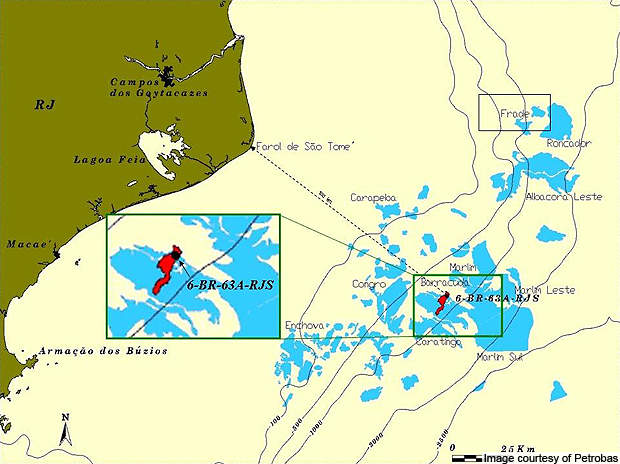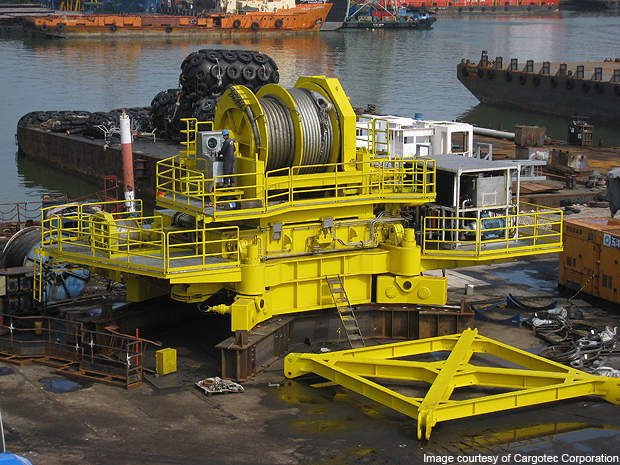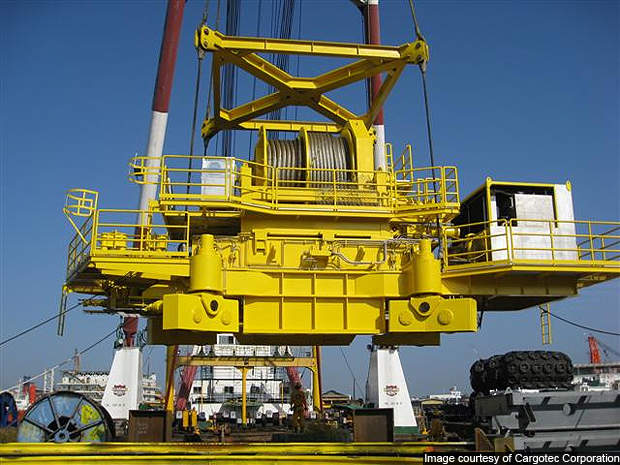The Frade field is located 370km off of the coast of Rio de Janeiro in the Northern Campos Basin, Brazil. The heavy oil and gas field lies at a water depth of 1,128m and is estimated to contain 200m to 300m barrels of recoverable oil.
The field is operated by Chevron, which has a 51.74% interest. Other partners include Petrobras, with 30%, along with Frade Japá o Petròleo, with 18.26%. The partners invested approximately $3bn in developing the field.
First production was in June 2009. In September 2010, production reached 65,000bpd. Peak output of 79,000 barrels of crude oil and natural gas liquids a day was achieved in 2011. The field will be operational until 2025.
On 7 November 2011, an appraisal well encountered an unforeseen pressure spike during drilling operations. The wellhead was tightly sealed and the leak was blocked in four days. About 18 vessels were deployed to support the sheen remediation and well abandonment activities. The current and future drilling operations at Frade field have been temporarily suspended by Chevron.
In December 2011, Brazil’s National Petroleum Agency (ANP) issued orders to shut one of 11 production wells and four produced water injection wells at the Frade FPSO facility.
The concerned production well yields less than 10% of the total production of the Frade field.
Discovery of the Frade oil and gas field
The field was discovered in 1986 by Petrobras, following which an appraisal well was drilled in 1989. Texaco drilled two more wells in 2001.
Geology of the field structure and reservoirs
The Frade field structure is a low relief anticline spread over 20km². It has two primary fault blocks containing three stacked reservoirs. The structure of the reservoir made it difficult for carrying out drilling activities at the field.
Field development at the Northern Campos Basin-based facility
Development plans for the field include drilling 12 horizontal production wells and seven vertical water injection wells. Extensive seismic imaging has been conducted to identify drilling targets due to the complex structure of the reservoir. The production wells will be individually tied back to the Frade FPSO.
In November 2005, Transocean’s Sedco 706 semi-submersible drilling rig was contracted to carry out operations at the field. The Noble Leo Segerius drillship commenced drilling at the field in 2008.
By September 2010, 45% of the drilling activities were completed. The remaining wells are planned to be drilled in the next 18 months.
Production at the Brazillian heavy oil and gas field
The field is operating 11 production and four water injection wells. Oil is produced through the Frade FPSO. The oil is stored and transported onshore by crude oil tankers.
The gas produced at the field is used to provide artificial lift for production wells. Surplus gas is transported onshore through existing pipelines owned by Petrobras.
Frade FSPO
The VLCC Lu San was converted into the Frade FPSO to operate at the Frade field.
The FPSO is moored by an internal turret and located at a water depth of 1,080m.
It has a storage capacity of 1,550,000bbls and weighs 273,576DWT.
The FPSO can accommodate 33 risers and has an oil production capacity of 100,000bopd. Gas compression capacity of the vessel is 106MMcf/d and water injection capacity is 150,000bwpd.
Contracts awarded regarding the Frade field
In August 2004, Intecsea was awarded a contract to carry out front-end engineering and design (FEED) studies for the field.
The work included cost estimation for flowlines, risers, FPSO hull and mooring and topsides facilities. Alliance Engineering worked in partnership with Intecsea to carry out the FEED studies for the FPSO.
The engineering, procurement, construction and installation contract for the FPSO was awarded to SBM Offshore in 2006.
SBM awarded a contract to MacGREGOR to provide a 485t plimsoll winch for the FPSO. The winch helps moor chains. It is also used for pulling in the risers. MacGREGOR also supplied a 45t supplementary winch, electro-hydraulic power supply and rotary platform.
FMC Technologies was awarded a $130m contract in 2006 to provide subsea systems for the field, including 19 subsea trees, 22 wellhead systems, 28 manifolds, foundation structures and other equipment.
In June 2006, Acergy won a contract to install 41km of gas pipelines connecting the Frade FPSO and Roncador pipeline manifold.
Kongsberg was chosen for its Kongsberg process simulation for creating subsea dynamic simulation models. The models were used for training and operation at the field.






